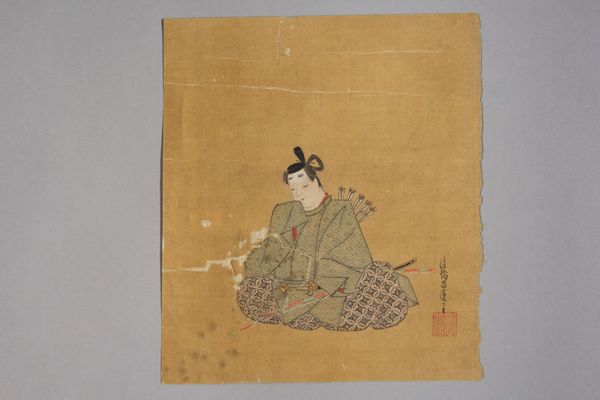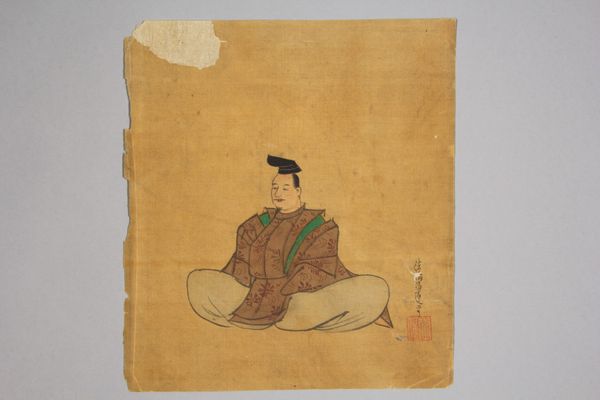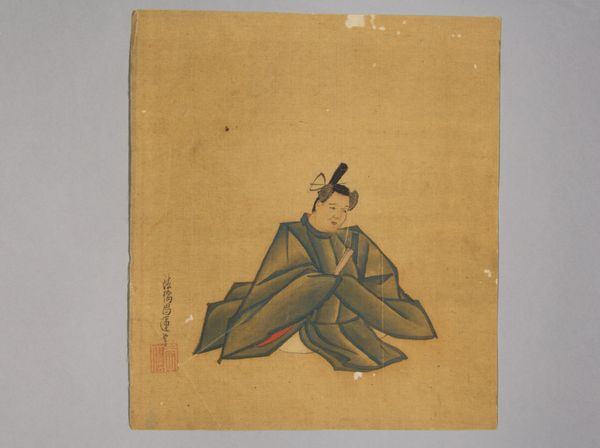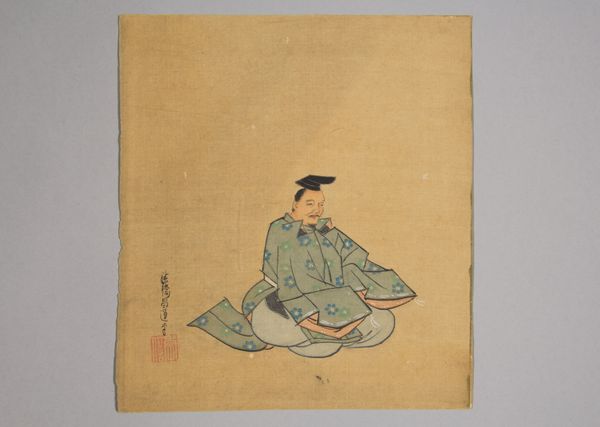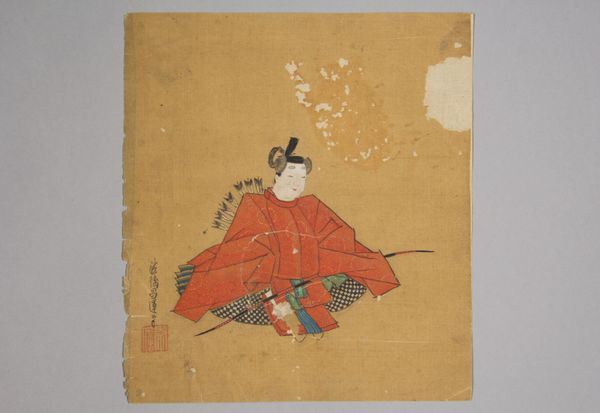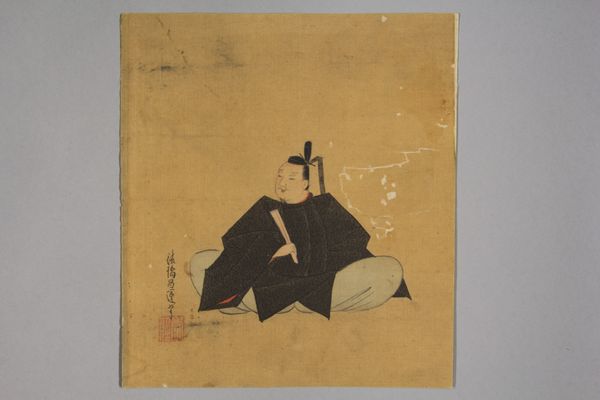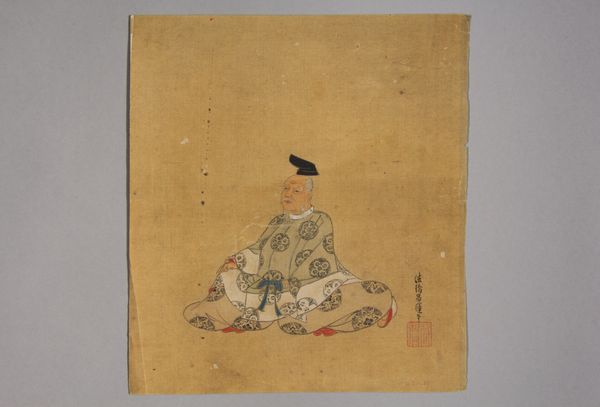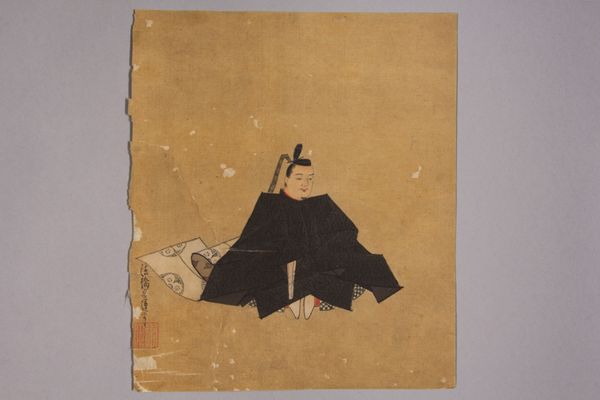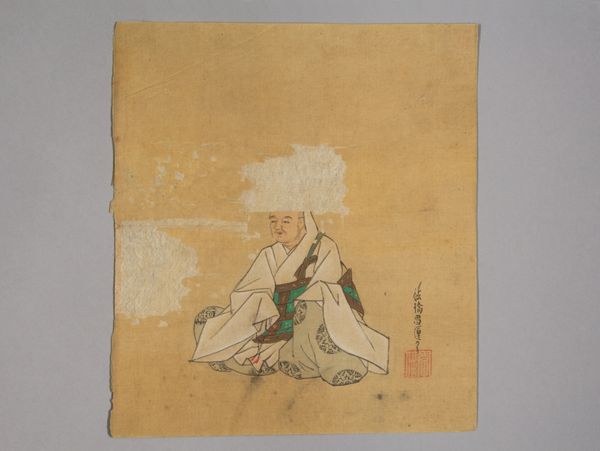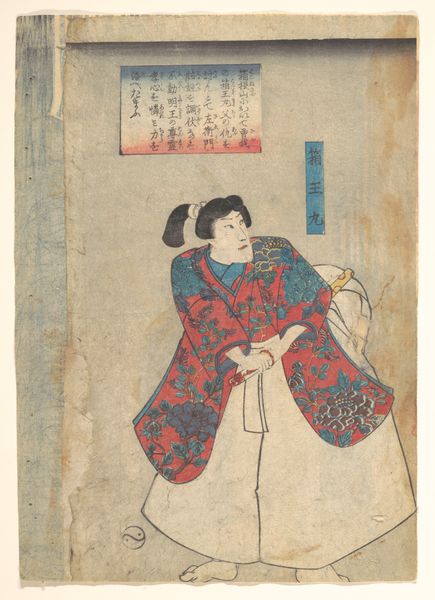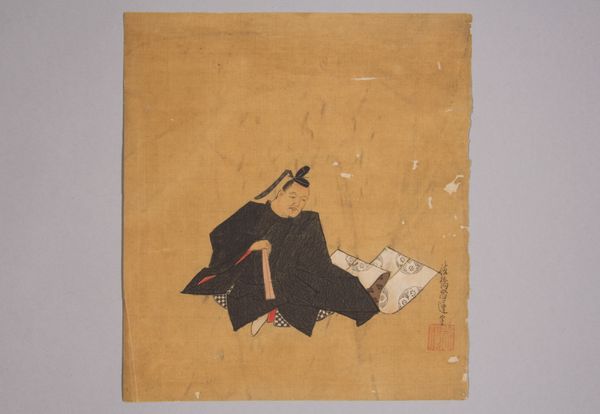
painting, paper, ink
#
portrait
#
painting
#
asian-art
#
paper
#
ink
#
coloured pencil
Dimensions: 7 1/4 × 6 1/2 in. (18.4 × 16.5 cm)
Copyright: Public Domain
Curator: Looking at Kano Shōsun’s “Immortal Poet,” from the 17th century, currently held at the Met. Immediately I'm struck by how this image, simple as it is, emanates stillness. Doesn’t it just feel like the air around it is quieter? Editor: It's quite minimal, yes. Ink and color on paper. But consider the paper itself. See the discoloration and worn edges? We’re engaging with an object that has physically aged, whose value today obscures the conditions of labor to produce it and its availability within society then. Curator: It’s like time is layered onto the piece, not just depicted, but truly present. He sits so formally, cross legged, his garments beautifully adorned with floral patterns. It gives the impression of someone both grand and incredibly lonely, almost melancholic, trapped in his immortality. Editor: Agreed. Those floral patterns… the labour of rendering them speaks to a larger system of craft production. It's also key to understand the cultural function of portraiture. What power dynamic is at play when a person is represented, commodified? It all impacts our experience of the piece. Curator: Perhaps. Yet, to me, it whispers a narrative of art and time, doesn't it? Consider what "immortal" truly signifies. Does the name bestow a grand purpose? The immortal poet keeps composing verses, and each attempt fades like petals scattered into time, except now he can not die to forget all the failures of words that he produced and which marked a painful memory in life... Editor: You’ve turned his representation into pure sentiment, focusing on romantic notions of genius and memory. Whereas, I’d say, we need to grapple with portraiture's political life and what is elided through the material act of image production. Who are we not seeing in art because those communities lacked resources, agency? Curator: Oh, I think you've given me another layer of appreciating this piece. It seems that even this poet himself knows his destiny cannot depend on only his works or memories of failures, since there are still so many layers we all haven't found. I suppose the conversation on it may need immortality of some sort. Editor: Yes, hopefully we continue finding new methods of critique, new vocabularies and theories to interrogate images. The conversation itself might grant the artwork a certain level of… immortality, to use your term.
Comments
No comments
Be the first to comment and join the conversation on the ultimate creative platform.

